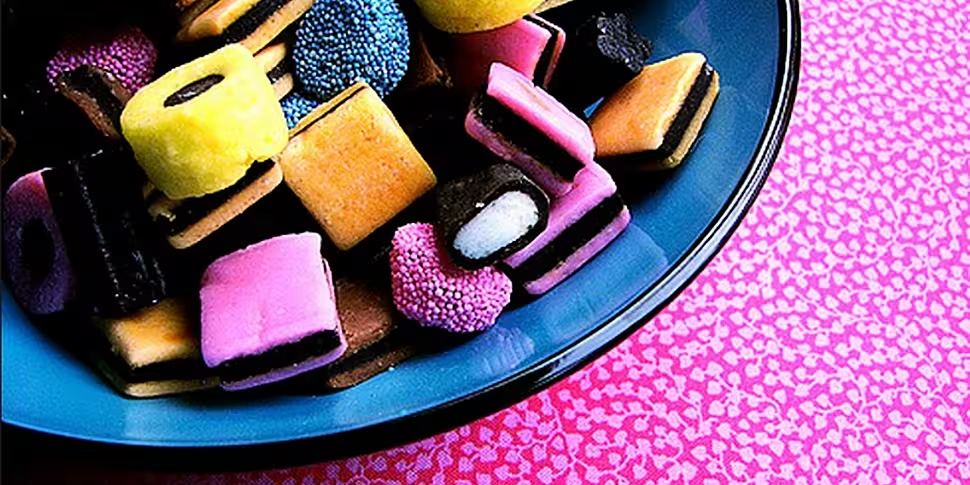Liquorice is a love/hate food, and I know which side of that slash I fall down on. Looking as far down my edible memory lane as I can, the first encounters I ever had with the hard and brown and black gums came in the form of Liquorice Bullets pulled from within the pockets of my granny’s cardigans. She was a woman of old-fashioned tastes, finishing barely audible whispered prayers by stuffing Clove Rocks – which I have ever since thought of as nuggets of perfumed bone marrow – and Satin Cushions conspicuously into her mouth. But sometimes it was those godforsaken Bullets she munched on between benedictions.
Shaped, for want of a more palatable image, like suppositories, I remember Liquorice Bullets as inch-long bonbons, brightly coloured and deceptively inviting. Covered in a thick and hard sugar paste, they were too hard to bite immediately into. Instead, you’d have to first tease them around your mouth, slowing scraping off the sweet confit case until a small and fleshy mound of dark liquorice finally poked through, indicating the time for crunchy chewing had arrived. But instead of unleashing a sweet interior, biting the bullet brought forth the kind of Umami misery that young children are not well equipped to deal with on their the-sweeter-the-better palates. I hated liquorice bullets. It didn’t stop me from eating them, any Allsort in a storm when you’re eight, after all. But even now, decades later, despite having cultivated a taste for anise and aniseed, the memories of chewing on those gluey and bitter chunks conjure up nothing but bittersweet revulsion.

[Flickr/mennomenno.]
Liquorice is a relatively small leguminous plant, native to Asia and Southern Europe, and anchored into the ground by thick roots that burrow as much as a metre down. It is these roots that contain the active ingredient in the confectionery, a compound named glycyrrhizin, which in its purest form is 50 times sweeter than sugar. An abundance of bitter elements in the roots masks the intensity of the roots’ sweetness, though for centuries they have been prized for medicinal use.
Western Europeans seem to have developed a taste for liquorice around the 16th century, when liquorice extract was used as a flavouring and colouring for gingerbread, as well as in stouts and other dark beers. This essence was later combined with sugar, water, gelatine, and flour to produce a pliant paste, brown or black in colour, and which can be moulded into any number of shapes and styles. Manufacturers have therefore always created wildly different styles of liquorice, moulding it into pipes, cables, and ‘bootlaces’, or combining the dark chews with sugar pastes like in the most famous iteration, Liquorice Allsorts.
As a person who hates liquorice, the near 120-year history of the Allsorts goes to show that in the world of corporate confectionery it really does take all sorts. George Bassett founded his sweet company in Sheffield in 1842, with a blundering salesman named Charlie Thompson credited with creating the variety bag. The story goes that when showing a customer samples from the factory, Thomspon knocked them onto a counter, scattering them and mixing them all up. The buyer, a sweetshop owner, was so taken with the assembled mixture that he placed an order, and in 1899 Liquorice Allsorts brand was born.
Perhaps the most unappealing thing about Allsorts is that they combine liquorice with coconut sugar paste, with each bag containing an assorted mix of such hideous sounding sweets as coconut chips, buttons, cream rock, sandwiches, cubes, Battenberg, and one Bertie Basset. Bertie, the Frankenstein’s monster of corporate mascots, was the brainchild of advertising copywriter Frank Regan, who cobbled him together with pipe cleaners in 1926. Ninety years under his stewardship and liquorice continues to go from strength to strength – the world record for the biggest Allsort ever, a 1.1-tonne cube, was just set in the New Zealand town of Levin. It beggars belief, but it would have made my granny happy.









